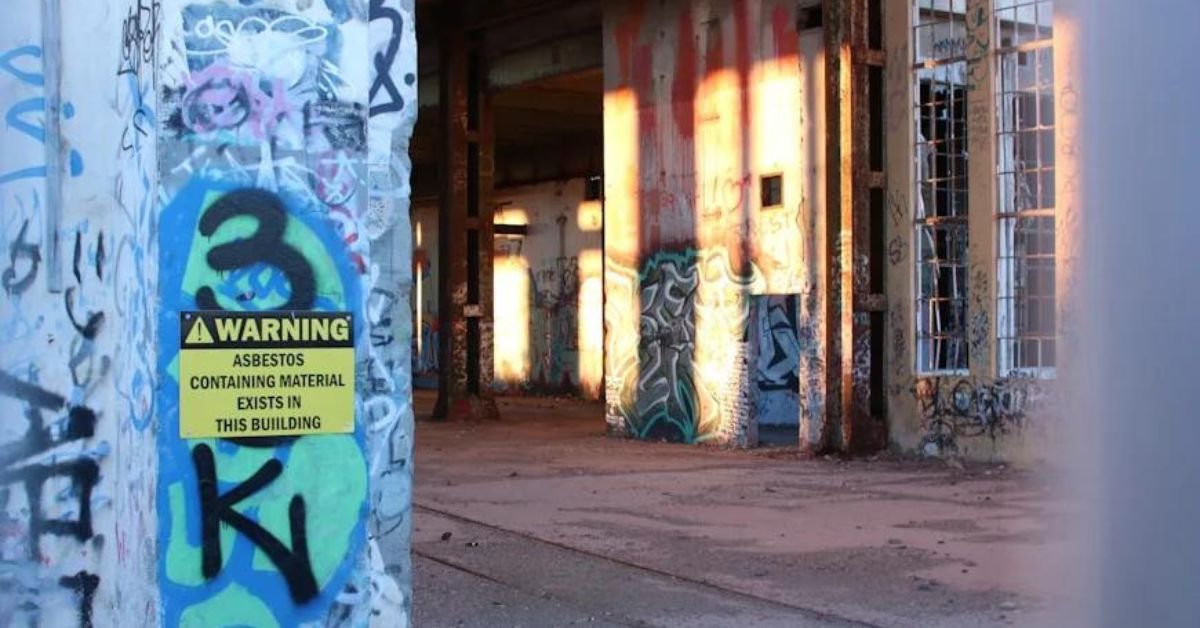Asbestos, a natural, fibrous mineral, was once commonplace in various industries due to its heat-resistant and conductive nature.
However, research revealed that long-term asbestos exposure can cause severe health issues. These issues included lung cancer, mesothelioma, and asbestosis. While its use has been restricted in the US since the 1970s, asbestos still lurks in many older buildings and products.
This has raised concerns among the public about its potential health risks. In this blog, we’ll explore the extent of asbestos poisoning in the US and whether you should be concerned about it.
Asbestos: The Silent Threat
Exposure to asbestos fibers can have devastating consequences. As we’ve established, inhaling these microscopic fibers can cause mesothelioma, a rare and aggressive cancer, as well as lung cancer and asbestosis, a chronic lung disease.
Despite the decline in asbestos use, the risk remains significant. According to a 2022 study published in the American Journal of Industrial Medicine, an estimated 1.3 million American workers in the construction and general industry sectors still face potential workplace asbestos exposure. Moreover, over 39,000 Americans succumb to asbestos-induced illnesses each year.
That’s the least scary part. The most terrifying thing is that you might not even know you’re sick for years – even decades – after exposure.
Symptoms often do not manifest for 10 to 40 years. This delay makes asbestos especially dangerous, as by the time you notice something’s wrong, the disease may have already progressed. So what should you watch for? Some of the earliest signs include:
- Shortness of breath: Feeling winded after minimal activity, or even at rest.
- Fatigue: Difficulty breathing and reduced lung function can cause extreme fatigue and weakness.
- Persistent cough: A dry, nagging cough that won’t go away.
- Chest tightness or pain: A discomfort that can feel like pressure or a dull ache in your chest.
- Changes in fingertips: Your fingertips or toes might appear wider or rounder than usual.
These symptoms are often misinterpreted. Hence, it’s essential to identify the potential risk factors. If you’ve worked in certain industries or lived in an older house, it’s worth discussing your concerns with a doctor.
While the symptoms themselves are concerning, it’s crucial to understand where you might come across sources of asbestos exposure.
Asbestos in Older Buildings and Homes
Many older buildings and homes dating before the 1980s may contain asbestos-containing materials (ACMs). Some common examples include insulation, flooring, ceiling tiles, and roofing materials.
These materials become hazardous when disturbed or harmed, as they can emit asbestos fibers into the air. Renovations, repairs, or natural disasters like hurricanes can increase the risk of asbestos exposure by disturbing these materials.
If you suspect the presence of ACMs in your home or workspace, seek professional assistance for proper identification, handling, and removal. The PBS estimates that approximately 35 million homes, schools, and commercial buildings built before 1980 still contain asbestos. Moreover, the US Census Bureau believes that about 12% of houses in the US were built before 1940. This means that over 50% of homes in the US could potentially be sources of asbestos poisoning.
This highlights the widespread potential for exposure, particularly during renovations or demolitions, where these materials can be disturbed.
Occupational Exposure Risks
Certain industries and professions have a higher risk of asbestos exposure, including construction, demolition, and specific manufacturing sectors.
Workers in these fields may encounter asbestos during demolition, renovation, or maintenance activities involving older buildings or equipment. Employers are legally required to protect their workers from asbestos exposure by following safety protocols, providing proper protective equipment, and ensuring compliance with regulations.
If these measures are not taken, workers who have experienced occupational exposure may have legal recourse. “Can I sue for asbestos exposure?” is a question affected individuals may ask, and consulting legal professionals can help evaluate your options.
According to TorHoerman Law, you might be able to sue for asbestos exposure to seek compensation for medical bills and other related losses. But again, each case is unique. To improve your chances of receiving decent compensation, consult an expert personal injury lawyer.
If you win your case during pre-trial, you can expect compensation between $1 million and $2 million.
Mealey’s Asbestos Litigation Report 2022 reveals that from 2010 to 2022, the average asbestos compensation varied between $3.2 million and $7.7 million. As of September 2023, several billions have been recouped as mesothelioma lawsuit payments. In 2021 and 2022 alone, settlements worth $208 million and $216 million, respectively, were handed out.
Natural Sources of Asbestos Exposure
While most asbestos exposure concerns stem from human-made products, it’s essential to recognize that asbestos can also occur naturally in certain geological formations and rocks.
People living near asbestos-rich areas or participating in activities that disturb asbestos-containing soils or rocks, such as mining or construction, also risk exposure.
Preventive Measures and Resources
Awareness and precautions are critical to minimizing asbestos exposure risks. If you suspect the presence of ACMs in your home or workplace, seek expert assistance from certified contractors or inspectors. They can properly identify, handle, and dispose of these materials safely.
Various resources and organizations offer information, guidance, and support for asbestos exposure and related health concerns. These include government agencies like the Environmental Protection Agency (EPA), the Occupational Safety and Health Administration (OSHA), and advocacy groups and support networks for individuals affected by asbestos-related illnesses.
Frequently Asked Questions
Q1. Can I Test My Home for Asbestos Myself?
While DIY asbestos test kits exist, they aren’t foolproof and could give you a false sense of security. Asbestos fibers are minuscule and easy to miss. It’s advisable to hire a certified asbestos inspector to assess your home.
Q2. Is There a Safe Asbestos Exposure Level?
No, there isn’t. Even brief exposure can lead to serious health problems down the line. That’s why it’s crucial to identify and properly manage any asbestos in your surroundings.
Q3. Can You Get Asbestos Exposure From Second-Hand Sources?
Yes, it’s possible to be exposed to asbestos indirectly through contact with someone who works with or around asbestos-containing materials, as fibers can cling to clothing, hair, and skin.
In conclusion, while asbestos exposure is a serious concern, taking the right precautions can significantly reduce the risks.
Stay informed about potential sources, learn to recognize the warning signs, and don’t hesitate to seek professional help if you detect any asbestos. Remember, an ounce of prevention is as good as a pound of cure. Prioritizing your health today can save you a lot of trouble tomorrow.
With awareness and vigilance, we can better protect ourselves and our loved ones from the hidden danger of asbestos toxicity.










